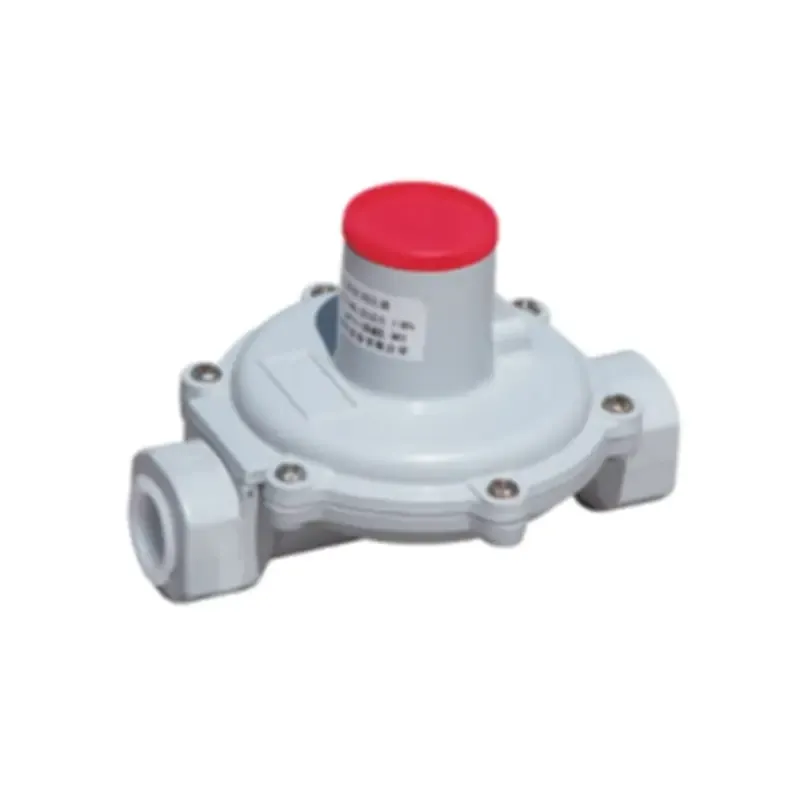
Nov . 06, 2024 05:30
Back to list
Understanding the Functionality of Gas Pressure Control Regulator Valves in Various Applications
Understanding Gas Pressure Regulator Valves Essential Components for Safety and Efficiency
Gas pressure regulator valves play a crucial role in various applications, including residential heating systems, industrial processes, and natural gas transportation. As a vital component in managing gas distribution, these valves help ensure the safe and efficient use of gas, maintaining the correct pressure levels throughout the system. This article will explore the function, types, applications, and maintenance of gas pressure regulator valves to highlight their importance in modern systems.
What is a Gas Pressure Regulator Valve?
A gas pressure regulator valve is a mechanical device designed to control the pressure of gas flowing from a source, such as a gas cylinder or pipeline, to a specific application. The primary function of the regulator is to reduce the high inlet pressure to a lower and more manageable outlet pressure, ensuring that gas is delivered at a safe and consistent rate. These regulators are essential to prevent excessive pressure that could lead to equipment damage, safety hazards, or inefficient gas usage.
How Does It Work?
The operation of a gas pressure regulator valve is based on a simple principle balancing forces. The regulator typically employs a spring-loaded diaphragm mechanism. When gas enters the regulator, it acts against the diaphragm, which moves to maintain the desired outlet pressure. If the outlet pressure rises above the set point, the diaphragm shifts, closing the valve to restrict gas flow. Conversely, if the pressure drops, the diaphragm opens the valve to allow more gas in. This continuous adjustment ensures that the pressure remains stable, adapting to fluctuations in demand.
Types of Gas Pressure Regulators
Gas pressure regulators come in various types, each designed for specific applications. The most common types include
1. Single-Stage Regulators These are simple devices that reduce high inlet pressure to a lower outlet pressure in one step. They are typically used in situations where the inlet pressure is relatively constant, such as in small residential applications.
2. Two-Stage Regulators These regulators provide a more stable outlet pressure by first reducing the inlet pressure in two stages. This design is ideal for applications where the inlet pressure can vary significantly, such as in commercial or industrial settings.
3. Back Pressure Regulators This type maintains a predetermined pressure upstream of the valve, allowing for better control in systems where fluctuations in pressure need to be managed more closely.
Applications of Gas Pressure Regulators
gas pressure regulator valve

Gas pressure regulators are utilized in a wide array of applications
- Residential Heating Systems In homes using natural gas for heating, cooking, or hot water, regulators ensure that appliances receive gas at the appropriate pressure, enhancing safety and efficiency.
- Industrial Processes Many manufacturing processes require precise gas control for operation. Regulators are vital in ensuring the correct gas pressure for equipment, such as burners, boilers, and generators.
- Gas Distribution Systems In natural gas transportation pipelines, regulators manage pressure changes that occur due to distance and elevation, maintaining a consistent flow of gas to consumers.
- Cylinders and Tanks Gas cylinders used in welding, medical applications, or laboratory settings often incorporate regulators to control outlet pressure from compressed gas sources.
Maintenance and Safety
Regular maintenance of gas pressure regulators is essential for safety and efficiency. Some key steps include
1. Periodic Inspection Routinely check for leaks, corrosion, or other signs of wear. Maintaining integrity is crucial for preventing accidents.
2. Calibration Over time, a regulator may drift from its set pressure. Regular calibration ensures it operates within specified parameters.
3. Cleaning Dust and debris can affect performance. Clean the regulator and its fittings to maintain smooth operation.
4. Replacement If a regulator shows significant signs of damage or wear, replacement is necessary to ensure safe operation.
Conclusion
Gas pressure regulator valves are essential components in managing gas flow safely and effectively. Their ability to maintain consistent pressure plays a significant role in safeguarding equipment and ensuring efficient gas usage across various applications. Understanding their functions, types, and maintenance requirements can enhance safety in gas distribution systems, thereby supporting the reliable operation of numerous industries. As technology advances, the importance of these regulators will only continue to grow, emphasizing their role in modern energy management systems.
Latest news
-
Safety Valve Spring-Loaded Design Overpressure ProtectionNewsJul.25,2025
-
Precision Voltage Regulator AC5 Accuracy Grade PerformanceNewsJul.25,2025
-
Natural Gas Pressure Regulating Skid Industrial Pipeline ApplicationsNewsJul.25,2025
-
Natural Gas Filter Stainless Steel Mesh Element DesignNewsJul.25,2025
-
Gas Pressure Regulator Valve Direct-Acting Spring-Loaded DesignNewsJul.25,2025
-
Decompression Equipment Multi-Stage Heat Exchange System DesignNewsJul.25,2025

